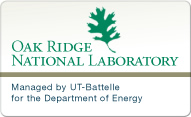
Method for Removing Precipitates in Biofuel
Oak Ridge National Laboratory
Contact ORNL About This Technology
Technology Marketing SummaryAt ORNL the application of ultrasonic energy, or sonication, has been shown to successfully remove or prevent the formation of 50–90% of the precipitates in biofuels. Precipitates can plug filters as biodiesel is transported from one location to another, and often cannot be detected by visual inspection.
DescriptionThis simple method solves one of the most serious challenges in the biodiesel industry. Most biodiesel is still mixed with regular diesel; this results in higher levels of precipitates. When the temperature of biodiesel falls below 5°C (41°F), precipitates form that can foul a vehicle’s fuel system. Simply heating the fuel above 5°C is not a solution because heat can degrade fuel.
BenefitsAdvantages
Raynella M. Connatser
Energy and Transportation Science Division
Oak Ridge National Laboratory Technology Status
- Prevents precipitates from plugging vehicle fuel systems
- Can be accomplished in storage tanks and in a vehicle’s fuel line
- Has no negative effect on fuel
- Reduces vehicle maintenance costs
- All fuel derived from biomass
- Storage tanks and bulk transportation for biodiesel
Raynella M. Connatser
Energy and Transportation Science Division
Oak Ridge National Laboratory Technology Status
Technology ID | Development Stage | Availability | Published | Last Updated |
|---|---|---|---|---|
| UT-B ID 200902314 | Development | Available | 10/20/2010 | 12/08/2010 |


